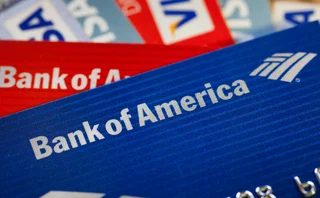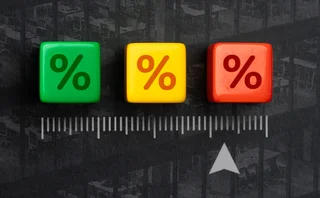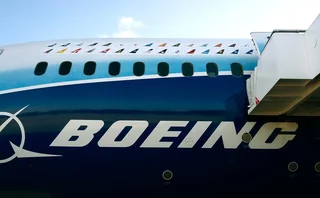
China: Promising futures
The long-awaited opening of China's equity derivatives market has begun. With the resumption of warrants trading in August and regulators now talking about stock index futures and options, it looks like an auspicious start. Jill Wong reports

The resumption of warrants trading on the Shanghai Stock Exchange on August 22 marked the first step in opening up China's equity derivatives market. The move, coming a decade after warrants were banned due to speculation, followed provisional measures issued on July 18 by the Shanghai and Shenzhen stock exchanges for warrants issues, and a circular from the China Securities Regulatory Commission (CSRC) on August 15 allowing fund managers to buy warrants issued as part of the share reform programme.
The share reform refers to government efforts to float non-tradable shares of listed companies. Only about one-third of the shares of listed companies in China are free-float, with the rest held by government entities and legal persons. The share disposal began with a pilot scheme run during May and June involving 46 companies, and has since been extended to more than 80 companies. Eventually, over $200 billion worth of non-tradable shares of all the 1,300 firms listed on the Shanghai and Shenzhen bourses will be floated.
China's top steel producer Baoshan Iron & Steel (Baosteel) was the first among the 46 firms in the pilot programme to list warrants on the Shanghai Stock Exchange. Baosteel offered holders of its tradable stock 2.2 shares for every 10 shares held; in addition, holders also received one warrant expiring August 2006, which gives them the right to buy one share for RMB4.50. The underlying stock was trading at RMB5.14 when the warrants were issued, and is currently trading at RMB4.30. Other companies, such as Wuhan Iron & Steel and Panzhihua Iron & Steel Group, are also expected to issue warrants.
The CSRC also issued a circular allowing fund managers to invest in warrants issued as part of the share reform, although these will "be carried out step by step on a trial basis" and managers have to file a detailed investment plan with the CSRC. The circular also set limits for these investments. Purchases by any one fund manager cannot exceed 5% of the net asset value (NAV) of the fund, the market capitalisation of all warrants held by a fund cannot exceed 3% of NAV, and a single fund manager cannot collectively hold more than 10% of a single warrant issue through all funds under management.
The agenda
Structured warrants are next on the agenda. Issuers are currently approved on a case-by-case basis, and the rules do not yet set out details on the eligibility of third-party issuers, such as credit rating and net asset value. However, on September 26 the Shanghai Stock Exchange gave in-principal approval to supplementary regulations on warrants that will provide more details on eligibility, net assets required and initial subscribers.
It is expected that local brokerages will be among the first issuers of warrants outside the share reform programme. The Shanghai Stock Exchange has announced plans to introduce warrants on the SSE 50ETF, an open-end index fund traded on the exchange, and a number of Chinese brokerages are known to have approval to start issuing SSE 50ETF warrants this year.
The approval for banks will come later, lawyers reckon. But some investment banks outside China have already started to issue products linked to domestic Chinese shares offshore. Due to their popularity with foreign investors, many banks have applied to the CSRC to increase their quota under the qualified foreign institutional investor (QFII) licence, which allows them to invest in domestic A shares within an investment quota granted by the State Administration of Foreign Exchange (Safe), and banks are keen to tap the vast investor base for warrants onshore.
"We're aiming to be one of the first issuers of warrants in China. We have already submitted an application to CSRC to expand our quota under the system and we should be getting a reply very soon," says one equity product specialist at an investment bank.
Thorsten Michalik, director of the investment products group at Deutsche Bank, says: "Basically, every investment bank that's active in Hong Kong is also looking to become a warrants player in China, there is no doubt about that."
French bank Societe Generale, Australia's Macquarie Bank, Deutsche Bank and Citigroup are among the foreign banks that have tapped the Hong Kong warrants market. "Covered warrants are trading instruments that are normally available in financial markets. There are calls and puts, so there's always the right time to launch this kind of product. Covered warrants are not just bull market instruments, or bear market instruments," adds Michalik.
Change in attitude
The latest developments show a marked change in attitude of regulators toward equity derivatives. Even conservative CSRC officials are now talking openly about the benefits of derivatives, and stock exchange officials are touting the idea of introducing index futures and options, which most expect to be introduced over the course of 2006.
In his opening address at a derivatives forum in Shanghai on September 26, Shang Fulin, chairman of the CSRC, said that progress in state-ownership reform has opened up opportunities for developing the futures and derivatives markets in China. He also stressed the need to strengthen regulation, pointing to China's past attempts at launching bond futures, which were undermined by an undeveloped system.
The CSRC has also started approving foreign currency equity-linked products for retail investors, the first of which was a three-year US dollar deposit linked to performance of the Dow Jones Industrial Average Index, structured by UBS. The product, which is 100% capital guaranteed, was launched at the end of July and distributed through another foreign bank's branches in China. The product has a layered structure, offering investors returns of up to 24% over the three-year investment period. In each of the three years, if the index rises or falls 35% or more, investors receive returns of 8% for that year. If the index moves by more than 25% but less than 35%, investors will see returns of 5%. If the index moves by less than 25%, returns will be 1% for that year.
In the last two weeks of September, two more deposits, structured by UBS and referenced to the Dow Jones Industrial Average Index, were launched to retail investors in China. Both products have 18-month maturities and are fully capital-protected. One of them gives investors full participation in the positive performance of the index, up to a maximum of 12.5%. If the index is below its initial level at maturity, the investor does not receive a coupon. But if the index rises 12.5% at any time during the investment period, the returns paid at maturity will be locked at 5.1%.
Speaking at the derivatives forum in Shanghai, Zhou Min, executive vice-president of the Shenzhen Stock Exchange, said: "If there are no sophisticated and mature stock options, it will be impossible to develop warrants products. The market needs a mechanism to enable investors to go short. From a risk management point of view, we should introduce stock options and index futures first."
Chen Han, senior director of the Shanghai Futures Exchange's strategic planning department and deputy head of financial futures development team, added: "The intention of introducing the futures market is to reinforce the robustness of the underlying market. In China, we have lots of blue chips that are instrumental in the futures market."
Currently, the futures market in China is limited to the trading of commodity futures on the Shanghai, Dalian and Zhengzhou exchanges. It is known that the exchanges are developing futures based on stock indexes, bonds and interest rates.
Steve Ng, managing director and chairman of ABN Amro Futures Asia, says: "During the past several months, we have been working with China Galaxy to build knowledge and capabilities for handling financial futures once it is launched by the exchanges."
ABN Amro Asia Futures' planned joint venture with China Galaxy Securities will be set up under the terms of the Closer Economic Partnership Arrangement (Cepa) signed between Hong Kong and China in 2003, which allows Hong Kong-based companies to own up to 49% of a Chinese futures ventures from January 1, 2004.
Following the publication of derivatives guidelines by the China Banking Regulatory Commission (CBRC) in 2004, both the People's Bank of China (PBOC) and Safe have accelerated the opening up of the bond and currency markets. The PBOC allowed the resumption of bond forwards trading on June 15, and Safe has allowed banks to offer renminbi cross-currency swaps since August.
Slow to act
However, the CSRC has so far been slow to issue regulations on equity derivatives due to concerns about speculation - which led the government to ban warrants and bond futures, and close down about 50 futures exchanges in the mid-1990s.
"A lot of investors in China still see warrants as a speculation tool rather than value the instrument by the underlying volatility," says Water Cheung, managing director and head of global financial markets, Greater China, at DBS in Hong Kong. "For example, most buyers of the Baoshan warrants were actually taking outright directional views on the stock and, as a result, the implied volatility reached hundreds of percent."
The regulators also want to deal with the overhang of state ownership of listed companies before opening the equity derivatives market further, say participants. Craig Donohue, chief executive of the Chicago Mercantile Exchange (CME), explains: "There are some very fundamental issues given the high level of state ownership of state-owned enterprises, the necessary reform in disclosure regimes of those companies that will probably improve as you get to less state ownership of those companies. There are a lot of different issues in terms of accounting standards, and so on. Those issues are very complicated. So I think the equity market changes are going to be more challenging perhaps than the interest rate or foreign exchange markets."
Others stress that education and liberalisation will have to go hand-in-hand. Stephen Cheung, professor of finance at the City University of Hong Kong, says: "Fund managers in China need hedging tools, and there's currently a lack of instruments for them to hedge their risks. Eventually, China is expected to launch index futures and derivative warrants. However, it is important to first raise transparency in the market and for investors, intermediaries, regulators and stock exchanges to be educated on the risks of using derivatives."
CHINA STOCK OVERSEAS
While China's domestic equity derivatives market is still in its infancy, the offshore market has seen rapid growth in recent years in derivatives linked to Chinese A shares and stock indexes.
Over the past 12 months, Deutsche Bank in Hong Kong has offered a cross-index correlation swap of the FTSE/Xinhua China 25 Index against the Hang Seng Index. The trade allows clients to sell correlation of returns between the two indexes by taking the view that the renminbi revaluation and constituent index members are in different stages of growth and economic cycles.
Structured products referenced to Chinese shares listed in Hong Kong have also been popular. One private banking product sold by Bear Stearns in October was a US dollar-denominated structured note with an 18-month maturity referenced to the iShares A50 China Tracker, an exchange-traded fund listed in Hong Kong.
If the iShares A50 China Tracker trades at or above 120% of its initial price at any time during the life of the trade, the investor receives 120% at maturity. If the underlying never reaches this level, but stays above a 78% barrier for the life of the trade, the investor receives the better of zero, or the positive performance of the iShares, multiplied by a participation rate of 150%.
If the underlying does breach the 78% barrier, but the final price is above the initial price at maturity, the investor receives the difference between the final price and the initial price, multiplied by the participation rate. If, however, the iShares tracker breaks through the barrier and the final price is less than the initial price at maturity, the note settles in shares.
Only users who have a paid subscription or are part of a corporate subscription are able to print or copy content.
To access these options, along with all other subscription benefits, please contact info@risk.net or view our subscription options here: http://subscriptions.risk.net/subscribe
You are currently unable to print this content. Please contact info@risk.net to find out more.
You are currently unable to copy this content. Please contact info@risk.net to find out more.
Copyright Infopro Digital Limited. All rights reserved.
As outlined in our terms and conditions, https://www.infopro-digital.com/terms-and-conditions/subscriptions/ (point 2.4), printing is limited to a single copy.
If you would like to purchase additional rights please email info@risk.net
Copyright Infopro Digital Limited. All rights reserved.
You may share this content using our article tools. As outlined in our terms and conditions, https://www.infopro-digital.com/terms-and-conditions/subscriptions/ (clause 2.4), an Authorised User may only make one copy of the materials for their own personal use. You must also comply with the restrictions in clause 2.5.
If you would like to purchase additional rights please email info@risk.net
More on Markets
BofA’s e-FX rebuild pulls it closer to rivals
Deploying its equities tech stack, bank seeks to get ahead of the pack with its algo and e-FX offerings
Corporates look to tackle unhedgeable inflation indexes
As inflation risks mount for corporates, some are finding their exposures are linked to niche indexes
Talking Heads 2024: All eyes on US equities
How the tech-driven S&P 500 surge has impacted thinking at five market participants
Hedge funds pile into short volatility QIS options
New twist on capturing vol premium remains popular despite mixed performance in August vol spike
Exotic FX derivatives bets in play as US election vol jumps
Forward volatility agreements see profits for funds; new trades include vol knockouts
CGB steepener trade gains traction amid PBoC actions
Stimulus measures and warnings on long-dated yields have seen basis more than double since March
New benchmark to give Philippine peso swaps a fillip, post-Isda add
Isda to include new PHP overnight rate and Indonesia’s Indonia in its next definitions update
Boeing’s descent to junk doesn’t scare investors
Analysts and managers say market can absorb any selling pressure from potential downgrade







